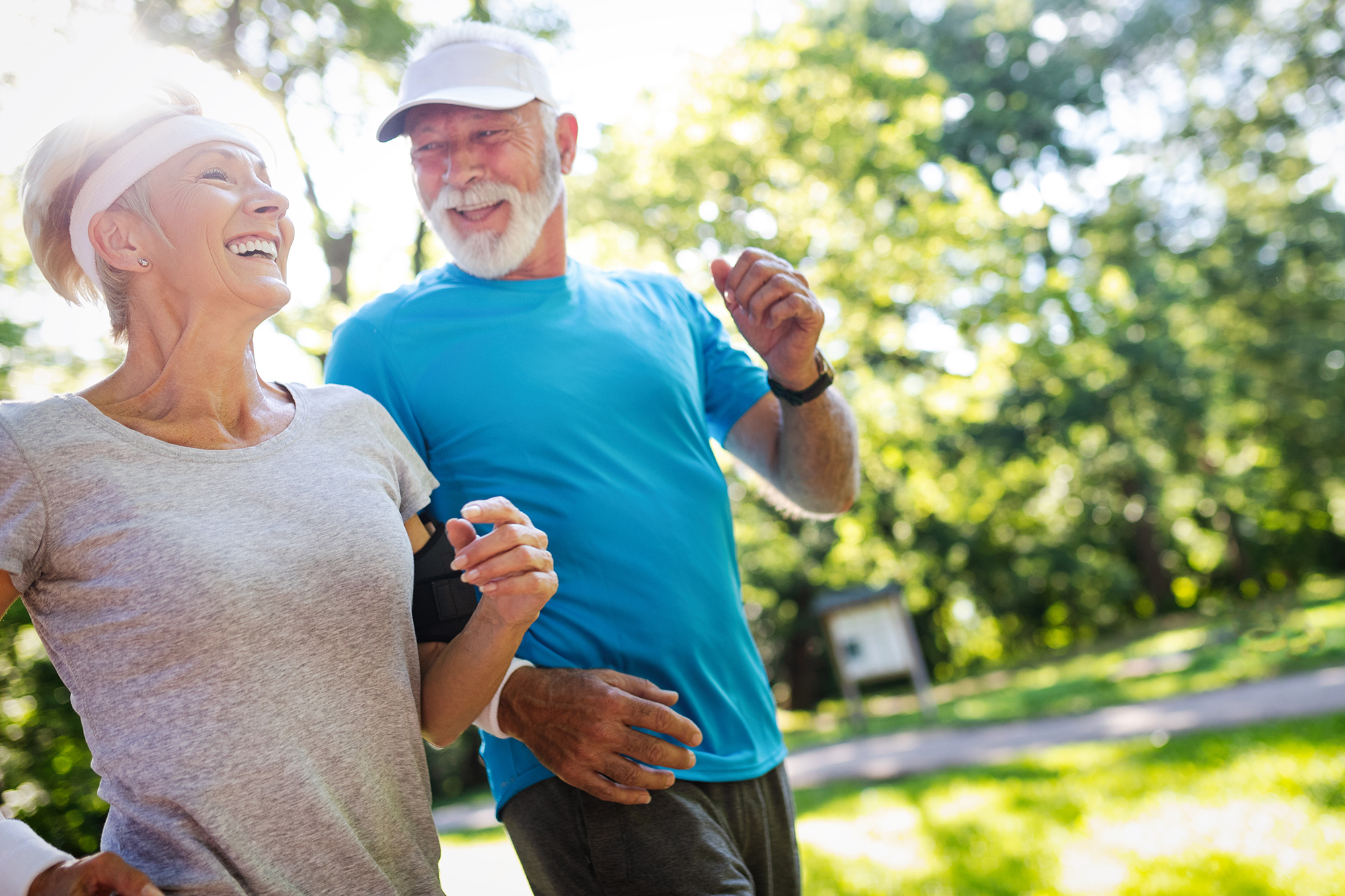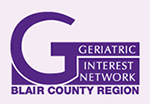
Step Into Fitness
As we grow older our agility and ability to move changes, and our concern of falling grows stronger. According to the Centers for Disease Control and Prevention, we have reason to be concerned. Each year, 2.8 million older people are treated in emergency departments for fall injuries with one out of five causing serious injury, such as broken bones or a head injury.
But there is good news. Blair Seniors Services, Inc. is offering two programs at their Senior Centers in hopes of teaching older adults ways to reduce falling. Healthy Steps in Motion (HSIM) is an exercise program designed for people of all fitness levels and strives to reduce the risk of falling by building body strength, increasing flexibility and improving balance.
The exercise programs are one-hour sessions held twice a week for eight weeks.
Healthy Steps for Older Adults (HSOA) is a falls prevention workshop that offers a fall risk screening and education class. HSOA is designed to raise awareness of falls, introduce steps on how to reduce falls, improve overall health, and provide referrals and resources. The HSOA are one day workshops.
Healthy Steps in Motion grew out of the FRIENDS (Fall Reduction Initiative: Establishing New Directions for Safety) which was developed in 1997 by the Pennsylvania Department of Aging to raise awareness about the risks of falling and the Healthy Steps program. HSIM is the exercise portion of a two-part comprehensive falls prevention program and is endorsed by Silver & Fit. Both the HSIM and HSOA are under the Pennsylvania Department of Aging Health & Wellness.
Done as a group at the Blair Senior Services Centers, HSIM participants learn the right way to do an exercise as they are guided through the exercise together by a certified instructor. The group also learns an exercise routine: a 10-minute warm up, followed by balance and strength exercises, and ends with a cool down-stretching. The Centers offer three levels so participants can continue HSIM as long as they like.
There is some risk involved with any physical activity. However, the risks of an inactive lifestyle are far greater than the risks of being physically active. Moderate intensity exercise is the goal of HSIM which starts with a low-intensity (mild or easy) workout and gradually increases intensity so that the workout gets harder. Intensity in exercise refers to how the body reacts to exercise. When a person exercises, the heart rate increases and breathing is faster and stronger. A low intensity workout is an easy workout, in which the heart rate and breathing go up slightly. Low intensity physical activity is lower in risk. However, a moderate intensity workout, in which the heart rate and breathing increase at a greater rate, has more benefits, as long as it is done safely. Therefore, moderate intensity physical activity should be the goal of older adults.
Participating in HSIM offers older adults protection against disease and disability, and the best insurance for an independent, healthy and active life. Exercise can improve balance and coordination, decrease risk of falling or injury, improve heart health, increase flexibility, help prevent low back pain and osteoporosis (weak bones), reduce stress, and improve digestion.
Other benefits include maintaining independence, feeling better physically and emotionally, thinking more clearly, increasing our energy and self-esteem, and improving sleep. Results show you’ll look more vibrant and healthy, and who doesn’t want that? With the HSIM you have added benefits of the chance to meet new people and have fun.
Blair Senior Services’ HSIM workshop leaders are certified through classroom instruction with an exercise physiologist to teach any of the three levels of strength and balance exercise. Additionally, they may use on-line modules and videos to enhance or review classroom instructions.
We used to think that exercise had to be an intense, sweating, heart-thumping experience. However, there has been an enormous amount of research proving the benefits of moderately, and even mildly, intense walking. While this program includes walking for its cardiovascular benefits, walking does not significantly improve muscle power or reduce age-related loss of muscle. That is why strength training is important.
Strength Training increases muscle strength by lifting or moving some type of resistance (e.g. weights, elastic bands or one’s own body weight). Even a simple movement like raising your arms overhead requires muscles strength. Lack of flexibility can become a problem as we age, if we are inactive or both. Activities such as driving a car, combing hair and tying shoes can become very difficult.
You do not have to feel pain to benefit from exercise. In fact, exercising too hard can lead to an injury. You may have some sore muscles when you start, but if you warm-up and then cool-down with stretching, your soreness should stop. But it does take more than 10 minutes a week to become fit. If you stay with HSIM, you will see results.
You are never too old to exercise. Your body can benefit at any age. Studies have shown that exercise can benefit people who are 90 years old and have never exercised before. People of all ages need exercise. Older adults need exercise to maintain flexibility, balance, coordination, muscle strength, strong bones, and energy. Most people, of all ages, need a lot more exercise than they get.
Before you start an exercise program, you should check with your doctor. In general, exercise helps the heart to work more efficiently and will help to prevent heart attacks. Exercise has also been found to lower blood pressure. However, if you do have high blood pressure, make sure it is being successfully controlled before you begin your exercise program. Your exercising could also help your heart, lungs, and muscles operate more efficiently. Eventually, your breathing should become easier.
Remaining physically active with a program such as the Healthy Steps in Motion Program can help to build and maintain strength which may help to decrease the potential to fall. It also can make a big difference if you do fall.
Mark Garrett, PT, Director of Therapy Operations at HealthSouth Rehabilitation Hospital of Altoona shared, “We have three systems that can affect our ability to regain our balance and can lead to falls: Visual System: which is input from our eyes; Proprioceptive system: which is the sensory input from our muscles, tendons and joints about position; and Vestibular System input from our inner ear. Anything that affects any of these systems may predispose someone to falling.”
Changes in vision may decrease our perception of the environment and predispose us to falls. It is recommend that you have your eyes checked regularly and make certain you are using the proper prescription. Bifocals can make it especially difficult to judge stairs. Any disease process that affects sensory awareness can make it difficult to detect changes in the position of your body and make it difficult to react when falling. The inner ear problems may result in balance issues and predispose a person to falling. It is recommended you have regular checkups and address problems immediately.
Medications can also play a part in falls. By not taking medications correctly or not understanding the side effects and interaction of current medication, a person can be predisposed to falling. Keeping your medications arranged in a pill organizer and checking with your physician about potential side effects of new medication and how it may react with other medication currently being taken could also help.
Garrett suggests you watch for warning signs that may indicate increased potential for falling. This may include difficulty rising from a chair or holding onto furniture or walls when walking. If these occur, it may be beneficial to see a physical therapist to address strength and balance deficits or an occupational therapist to address modifying daily activities to improve safety, such as adaptive equipment to aid with activities of daily living or an assistive device to help with walking.
The average age of HealthSouth’s patient who has fallen is 76, but falls affect people of all ages. Garrett said that many people are under the assumption that using adaptive equipment or an assistive device, such as a cane or walker, is a sign of decreased independence. “Actually, using adaptive equipment may not only improve safety but may allow you to do more as a result of the decreased energy needed to complete the activity. Using an assistive device when walking can improve stability, often improves gait speed, and greatly decreases the potential of falls,” according to Garrett.
HealthSouth’s Occupation Therapy team helps their patients prepare for when they return home and perform everyday activities such as cooking, washing dishes, doing laundry, caring for pets and going grocery shopping. Rearranging where items are kept will be very helpful, such as using the lower shelves on wall cabinets and higher shelves on floor storage units. This helps to minimize reaching or bending and reinjuring themselves. They also recommend making some home safety improvements, such as eliminating throw rugs, repairing loose stair railings, improving lighting, adding grab bars to showers and bathtub, and eliminating clutter.
HealthSouth encourages their patients to stay active after leaving their care and attend a community program that helps prevent risk of future falls, such as the HSIM. “While at home, they should get up out of their chair every couple hours to walk around, find reasons to move. When you’re more physically fit, the faster you recover from falls,” suggested Garrett.
Let’s make a positive choice and start exercising. As they said, it is never too late to begin. See you at the Senior Center for the next Healthy Steps in Motion and Healthy Steps For Older Adult Workshops! Please contact Blair Senior Services, Inc. for more information at 814-946-1235 or check our calendar of events on our website at www.blairsenior.org, and be sure to like our Facebook page for more on these and other great events and programs.



